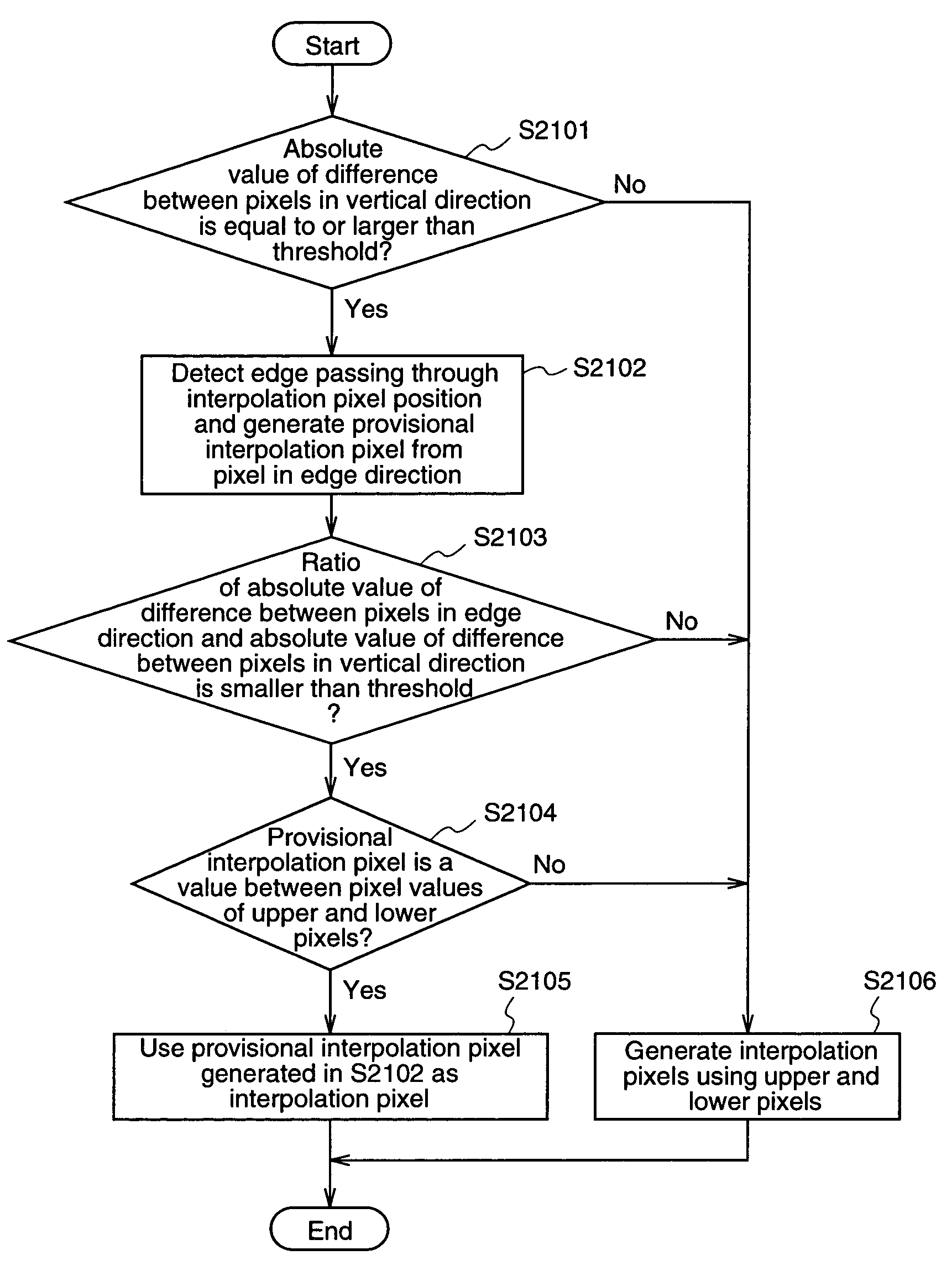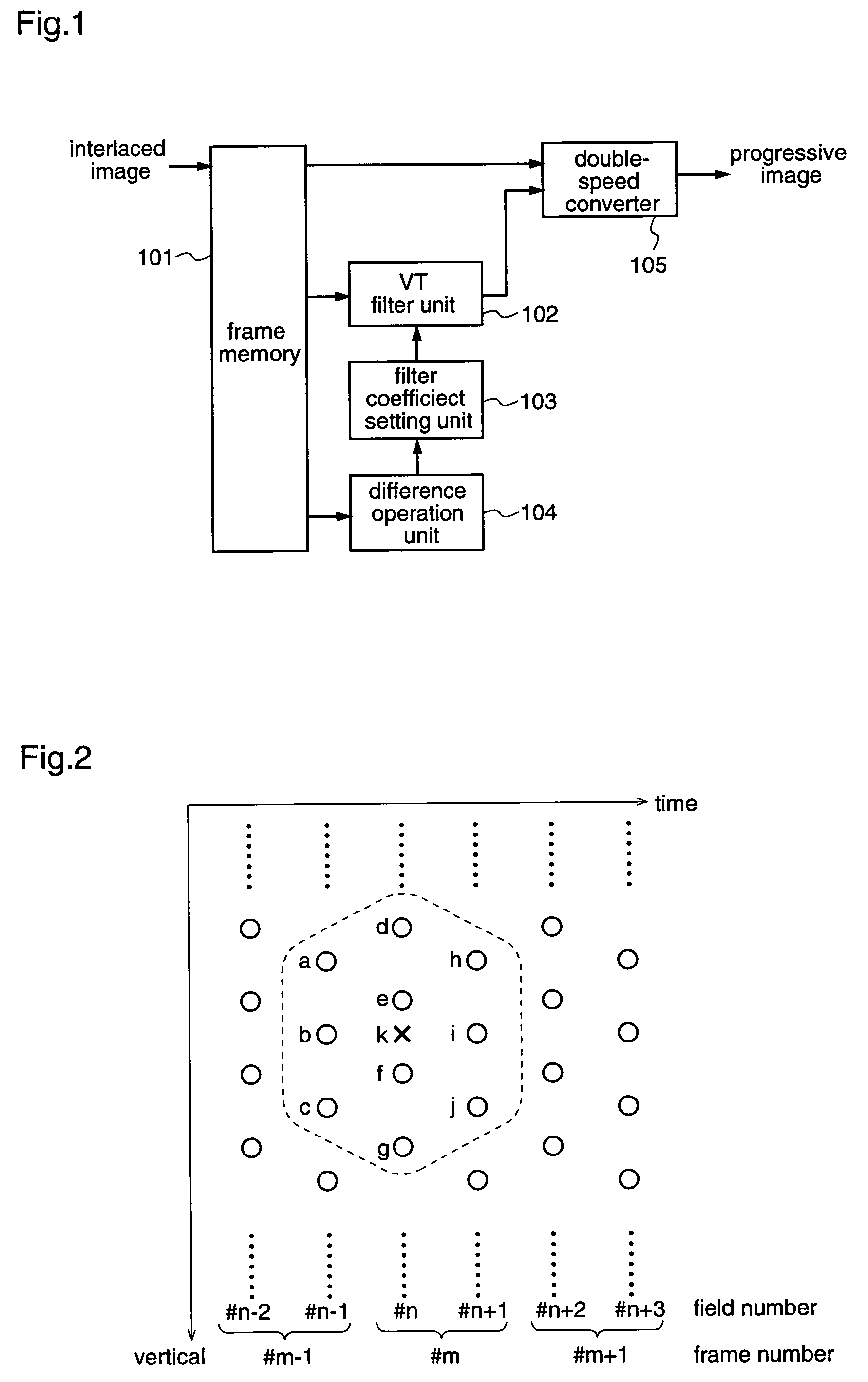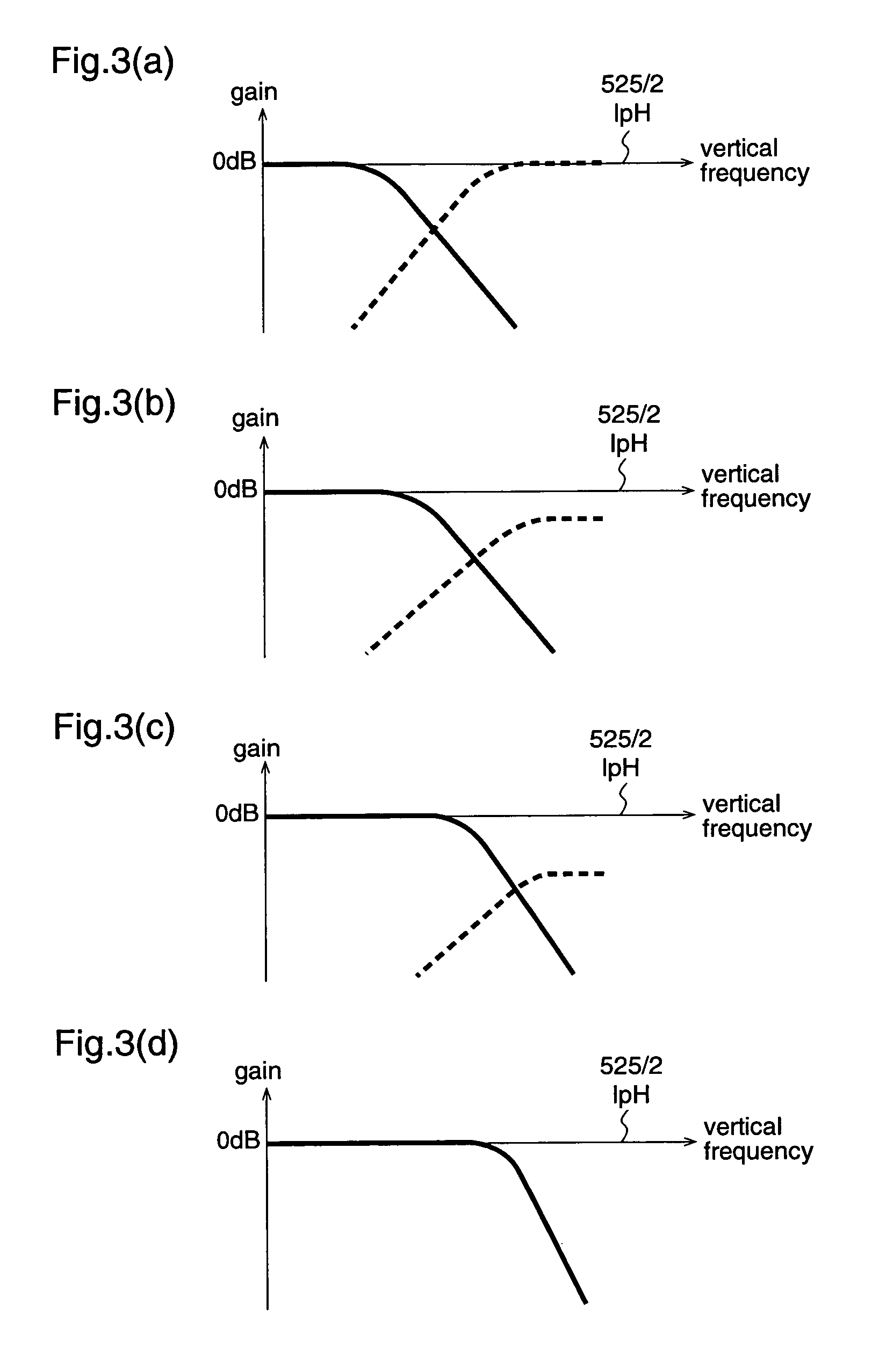Method and apparatus for deinterlacing
a deinterlacing and apparatus technology, applied in the direction of signal generators with optical-mechanical scanning, selective content distribution, television systems, etc., can solve the problems of large quantity of signal processing for motion vector detection, inability to detect motion vectors in time, and inability to deinterlacing the effect of a large number of codes
- Summary
- Abstract
- Description
- Claims
- Application Information
AI Technical Summary
Benefits of technology
Problems solved by technology
Method used
Image
Examples
first embodiment
[0089]Hereinafter, a first embodiment of the present invention will be described with reference to FIGS. 1 and 2. FIG. 1 is a block diagram illustrating a deinterlacing apparatus which includes a frame memory 101, a VT filter unit 102, a filter coefficient setting unit 103, a difference operation unit 104 and a double-speed converter 105. FIG. 2 is a diagram schematically showing a state of an interlaced image on a time-vertical plane, in which a white dot shows a pixel (scan line) and white dots that are arranged in the vertical direction show pixels in the same field.
[0090]Initially, the deinterlacing apparatus stores an inputted interlaced image in the frame memory 101. Here, a description is given of a case where fields #n−2 to #n+1 as shown in FIG. 2, i.e., four fields, are stored, and the field #n is subjected to deinterlacing.
[0091]In this case, the VT filter unit 102 receives data of the fields #n−1, #n and #n+1. Then, when an interpolation pixel in a position “k” as shown i...
second embodiment
[0105]Hereinafter, a second embodiment of the present invention will be described with reference to FIG. 4. FIG. 4 is a block diagram illustrating a deinterlacing apparatus which includes a frame memory 101, a VT filter unit 102, a filter coefficient setting unit 103, a difference operation unit 404, and a double-speed converter 105.
[0106]Initially, the deinterlacing apparatus stores an inputted interlaced image into the frame memory 101. Here, a description is given of a case where three fields, i.e., fields #n−1 to #n+1 as shown in FIG. 2 are stored, and the field #n is subjected to deinterlacing.
[0107]In this case, the VT filter unit 102 receives data of the fields #n−1, #n and #n+1. Then, when an interpolation pixel in a position “k” as shown in FIG. 2 is to be generated, for example, pixels “a”–“j” as the pixels adjacent to pixel “k”, are subjected to the filtering process.
[0108]The difference operation unit 404 receives pixels “b” and “i” in the adjacent fields, which are at t...
third embodiment
[0117]Hereinafter, a third embodiment of the present invention will be described. FIG. 5 is a block diagram illustrating a structure of a deinterlacing apparatus which includes a MPEG video decoder 501 and a deinterlacer 508. MPEG video which is obtained by motion-compensating and predictive coding an interlaced image according to the MPEG method is inputted to this deinterlacing apparatus. The MPEG video decoder 501 includes a variable-length decoder 502, an inverse quantizer 503, an inverse DCT unit 504, an adder 505, a motion compensator 506, and an image memory 507. FIG. 6 is a block diagram illustrating a structure of the deinterlacer 508, which includes a parameter memory 601, a motion vector converter 602, a motion vector judgement unit 603, an inter-field interpolation pixel generator 604, an intra-field interpolation pixel generator 605, a weighting factor decision unit 606, and a progressive image generator 607.
[0118]A MPEG video code sequence which is inputted to the MPEG...
PUM
 Login to View More
Login to View More Abstract
Description
Claims
Application Information
 Login to View More
Login to View More - R&D
- Intellectual Property
- Life Sciences
- Materials
- Tech Scout
- Unparalleled Data Quality
- Higher Quality Content
- 60% Fewer Hallucinations
Browse by: Latest US Patents, China's latest patents, Technical Efficacy Thesaurus, Application Domain, Technology Topic, Popular Technical Reports.
© 2025 PatSnap. All rights reserved.Legal|Privacy policy|Modern Slavery Act Transparency Statement|Sitemap|About US| Contact US: help@patsnap.com



